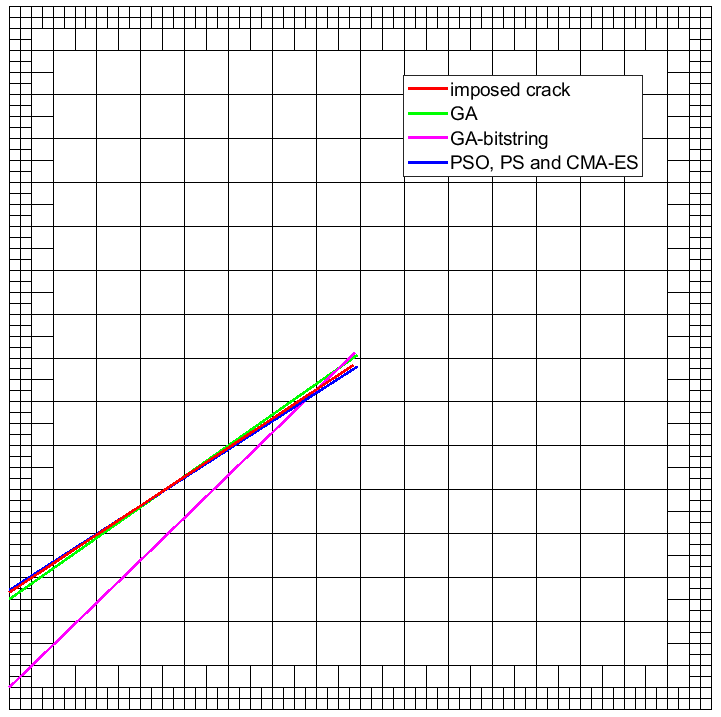Damage localization by SBFEM and global optimization methods
Damage localization by inverse methods is a computationally intensive task. Many forward runs are performed with candidate flaws and compared to a either a measurement or high fidelity numerical reference. The difference in results is consolidated to the so called fitness function, which we wish to minimize. While quadtree based SBFEM is utilized to perform the forward runs, global optimization algorithms such as genetic algorithms (GA), particle swarm optimization (PSO), Covariance Matrix Adaptation Evolution Strategy (CMA-ES) and patternsearch (PS), which treat the task of spawning new candidate flaws, are explored.
Computational efficiency
Computational efficiency can be enhanced by reducing the computational toll of a single forward run, selecting an appropriate global optimization algorithm that converges to the global minimum, while spawning fewer candidate flaws in the process, and taking advantage of the inherent parallel nature of such analyses.
The quadtree data structure complements SBFEM's polygon underpinnings: Issues of hanging nodes are eliminated, precomputation of large parts of the mesh are possible, due to a limited amount of precomputable polygonal element realizations. Further, only portions of the mesh affected by the subsequent candidate flaw need be updated, which can easily be locally contained utilizing the quadtree data structure. For typical problems, this reduces the computational cost of an analysis by a factor of 5-6x.
Most global optimization algorithms provide the option of parallel processing, which we use heavily herein. Simulations on large scale structures benefit greatly, since the majority of the computational effort is spent on the forward run and not lost due to communication overhead. Combining the selective updating and parallel computation options typically increases the simulation speed by at least an order of magnitude over the already performant SBFEM baseline.
It was further observed that CMA-ES and PS provide a noticeable decrease in computation, since the respective algorithms autonomously choose the amount of candidate flaws to spawn.

